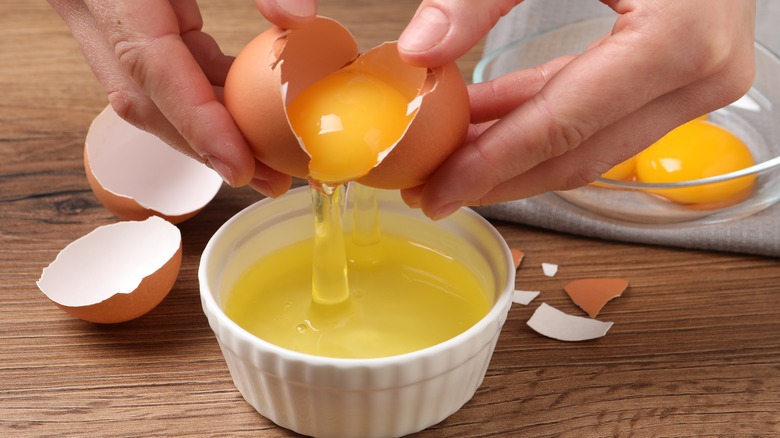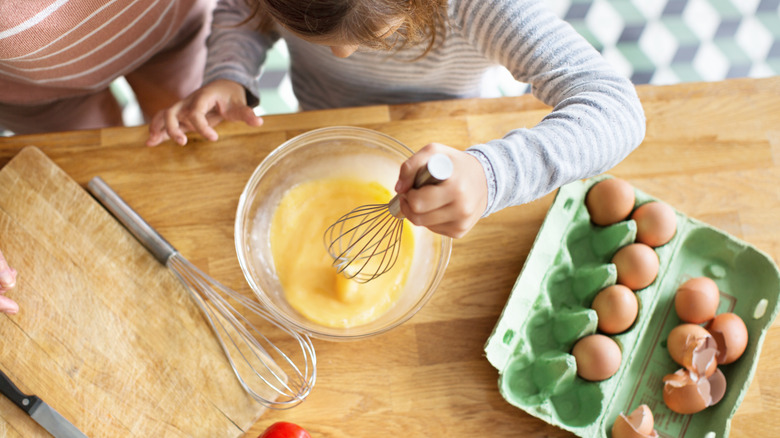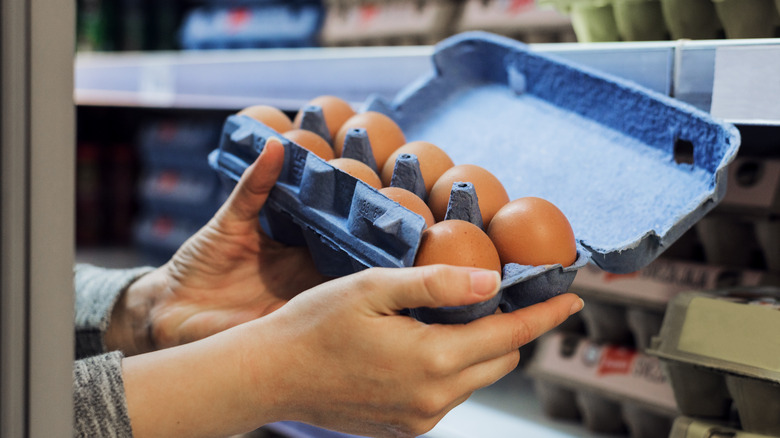The Biggest Mistake You'll Make If You're Weighing Eggs For A Recipe
When it comes to common kitchen scale mistakes and how to avoid them, how you weigh eggs for a recipe is an important consideration. When weighing eggs there's a simple step you can take to ensure accuracy. Always crack eggs before weighing them, otherwise the shell could throw off the weight. In this case, you may not be using the correct amount of liquid egg based on the recipe instructions.
Worrying about the added weight of eggshells may seem a little fussy, but precision is key in the kitchen. This is especially true when baking, as the water content of eggs varies according to size. That means using the wrong egg size may contribute too much or too little water to your recipe, spoiling the outcome. Because you want to know the exact weight of the liquid part of the eggs you're using, cracking them first ensures an accurate measurement.
Best practices when weighing eggs
Cracking eggs and tossing the shells is merely one aspect of determining an accurate weight for your recipes. How you weigh liquid eggs can also impact the outcome and may even throw off otherwise careful measurements. It isn't always safe to rely on egg sizes, as not every home chef can easily convert a large or medium egg into its weight in ounces.
It's not as simple as just cracking the eggs and weighing the bowl. First, you must always subtract the weight of the bowl from the total weight (or use the "tare" button on your scale). And instead of keeping the yolks and whites separate, the better approach is to gently beat them together. Weighing this mixture ensures the greatest accuracy and prevents the balance of egg yolks to egg whites potentially being off. This technique is also helpful when encountering a recipe that calls for half an egg, as it helps you achieve the most accurate measurement.
How much do different sizes of eggs weigh?
The USDA does provide information on the weight of different egg sizes. However, the weight is according to a dozen eggs and does not indicate the weight of individual eggs. For example, a dozen jumbo eggs weigh 30 ounces, while the same number of small eggs weigh 18 ounces.
It's possible to approximate how much each egg weighs, but the weights are not precise. A jumbo egg may yield 2.5 ounces per egg, while a small egg could weigh 1.5 ounces. Then there's liquid volume, which also varies. A jumbo egg may contain more than 2 ounces of liquid, but there's no guarantee that all the eggs in the carton will offer the same.
It's best to remember what the USDA says about individual eggs: "Some eggs in the carton may look slightly larger or smaller than the rest." That means your best bet is to crack and weigh eggs to ensure you're getting the right amount. This tip is sure to serve you well when making recipes that use a lot of eggs, such as egg-based casseroles and quiches, and especially baked goods that require the most accurate measurements possible.


